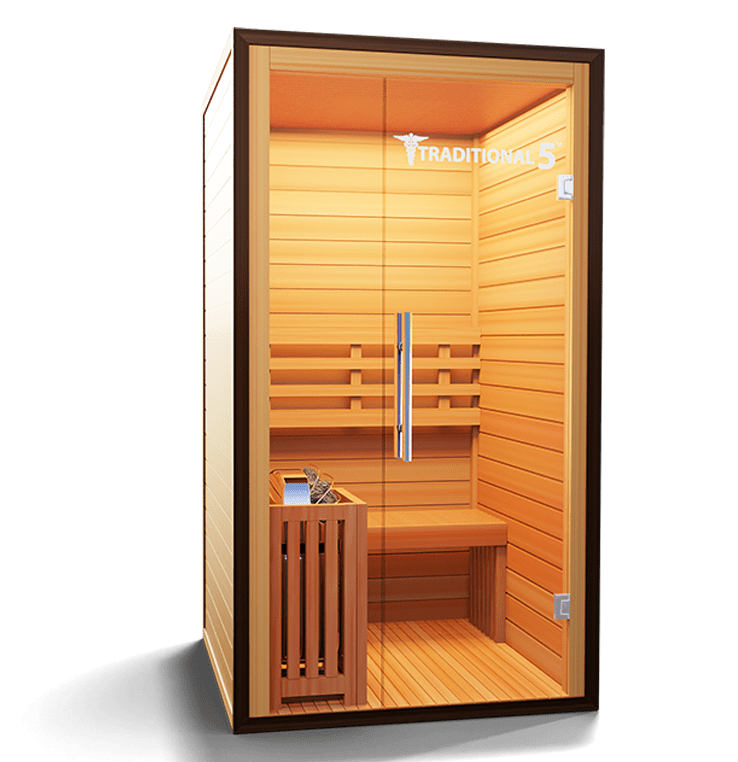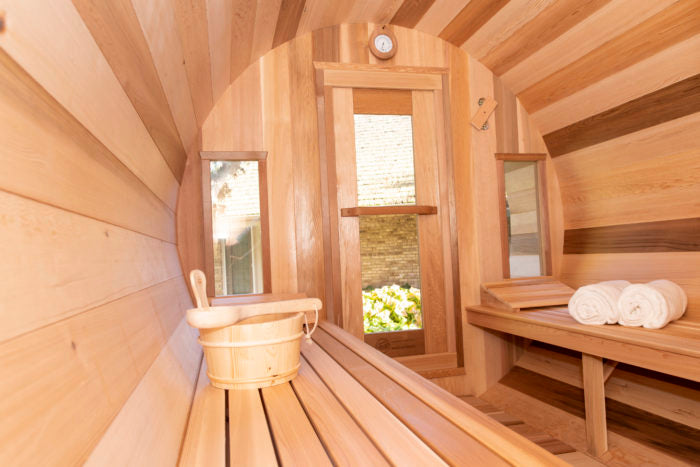A Biased View of Traditional Sauna
A Biased View of Traditional Sauna
Blog Article
The Definitive Guide for Traditional Sauna
Table of ContentsA Biased View of Traditional SaunaThe Best Guide To Traditional SaunaRumored Buzz on Traditional SaunaTop Guidelines Of Traditional SaunaSome Of Traditional Sauna
Power financial savings is one point to take into consideration for people who intend on utilizing their sauna often. For a typical sauna, bathers typically require to wait for 30-40 mins for the space to preheat prior to entering. Infrared saunas, on the various other hand, usually reach their excellent temperature in around 15 minutes.That means that in an infrared sauna, bathers can begin enjoying their sauna promptly. One distinction in between both types of sauna that is frequently forgotten is the social experience. Standard saunas are typically large enough to fit multiple people and allow for interacting socially. Infrared saunas are generally smaller sized in size, giving even more of a private escape and less of a social experience.

The Best Strategy To Use For Traditional Sauna

Attempt a sauna today and uncover several of the incredible benefits on your own!.

Factors such as warmth resistance, preferred level of detoxification, and overall health should be taken into consideration when deciding which sort of sauna to use. Infrared saunas are a kind of sauna that use infrared light to heat up the body straight, as opposed to warming the air around the body like typical saunas.
Traditional Sauna for Beginners
The temperature in an infrared sauna is usually less than in a traditional sauna, with temperatures ranging from 120F to 150F. Infrared saunas offer a variety of benefits that make them an appealing option for those aiming to enhance their health and health and wellbeing. Some of the advantages of infrared saunas consist of: Infrared saunas use lower temperature levels than conventional saunas, which can make them extra comfy for those that find heats challenging to endure.
Infrared saunas have been revealed to assist the body get rid of toxins via sweating. Sweating can additionally aid to boost skin wellness by eliminating contaminations and dead skin cells.
The warm generated by infrared saunas can assist to enhance blood flow and boost blood circulation. Infrared saunas have actually been revealed to help minimize stress and promote relaxation.
With their lower temperatures, deep penetration, and series of health and wellness benefits, infrared saunas are an excellent way to loosen up, unwind, and enhance your total health. Conventional dry saunas have been around for centuries and are still prominent today. They are typically heated up with timber, gas, or power and have reduced moisture levels.
The Ultimate Guide To Traditional Sauna
There are numerous benefits to using a conventional dry sauna. Right here are a few: Relaxation: The heat and reduced humidity in conventional completely dry saunas can assist relax the muscles and minimize stress and anxiety levels. Cleansing: Sweating in a sauna can assist eliminate toxins from the body, which can boost total health.
When it concerns saunas, there are 2 main sorts of heating techniques: conventional and infrared. Conventional saunas utilize warmed air to warm up the body, while infrared saunas use infrared radiation to penetrate the skin and heat the body from within. One of the Check This Out major distinctions in between both methods is the kind of heat they produce.
Standard saunas heat up the air, which then warms the body via convection. Infrared saunas, on the other hand, heat the body straight via radiation.
In regards to energy performance, infrared saunas are usually a lot more reliable than standard saunas since they need much less power to operate. They likewise warm up quicker, so they can be utilized for much shorter sessions. Traditional Sauna. When it involves the results on the body, both kinds of saunas have been revealed to have benefits
A Biased View of Traditional Sauna
Infrared saunas have been shown to have comparable benefits, in addition to possibly assisting with detoxing, skin health, and immune function. On the whole, the choice between a traditional or infrared sauna comes down to personal preference and specific demands. Standard saunas may be much better for those who like greater temperature levels and a much more extreme sweat feedback, while infrared saunas might be much better for those that desire an even more mild and reliable warmth therapy.
Both kinds of saunas use unique advantages and downsides that need to be thought about prior to making a decision. The option between an infrared sauna and a conventional completely dry sauna mostly depends upon personal choice and the desired advantages. Those that choose a more comfy, lower temperature environment might favor an infrared sauna, while those that are trying to find intense warmth and a conventional sauna experience might like a conventional dry sauna.
Below are some safety suggestions to remember visit this site when utilizing infrared and traditional dry saunas:: Saunas can cause too much sweating, causing dehydration. It is essential to drink plenty of water previously, during, and after sauna sessions to stay hydrated.: It is suggested to restrict sauna sessions to 20-30 mins to stay clear of resource overheating and dehydration.
Report this page